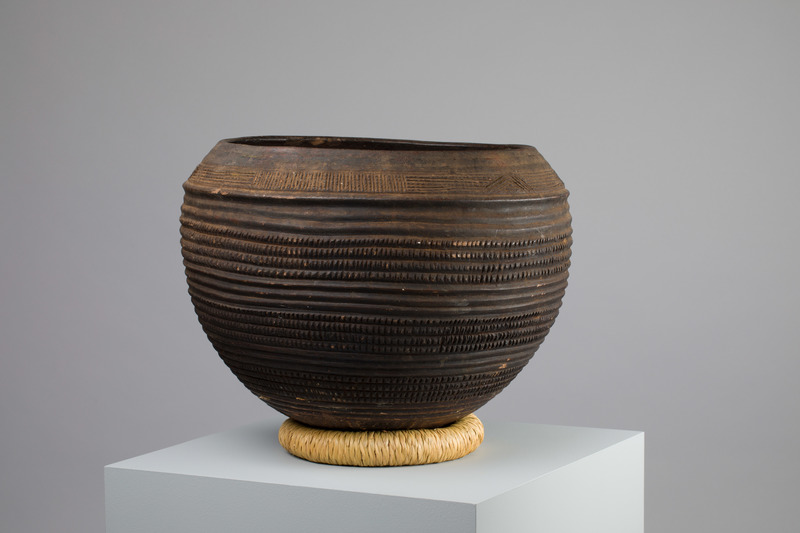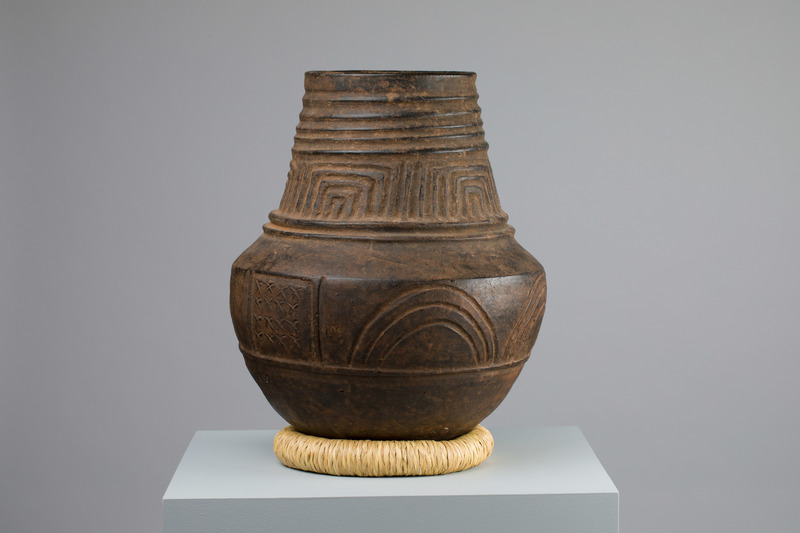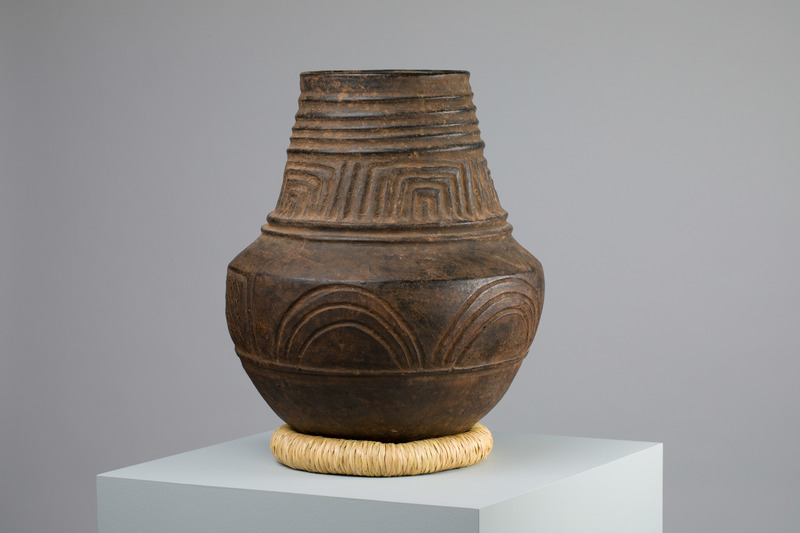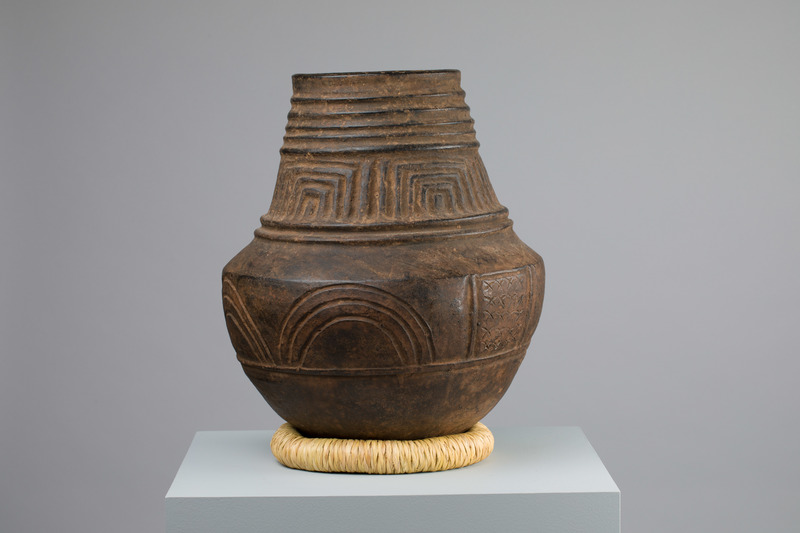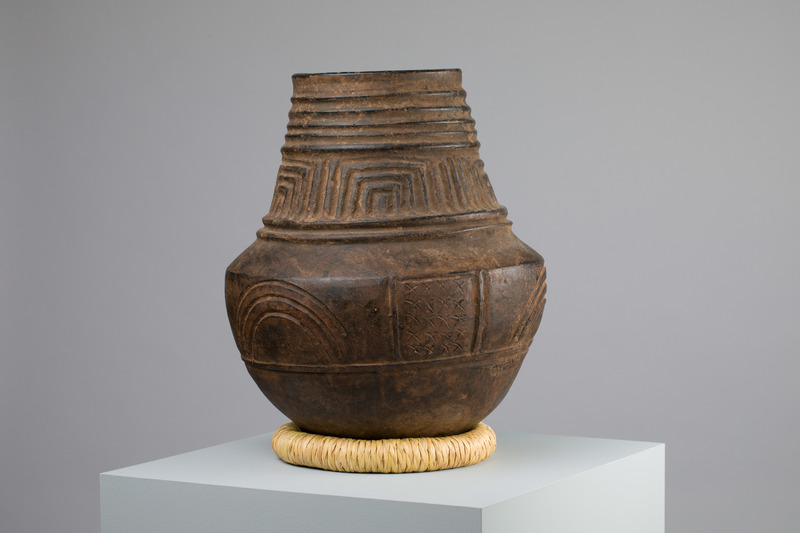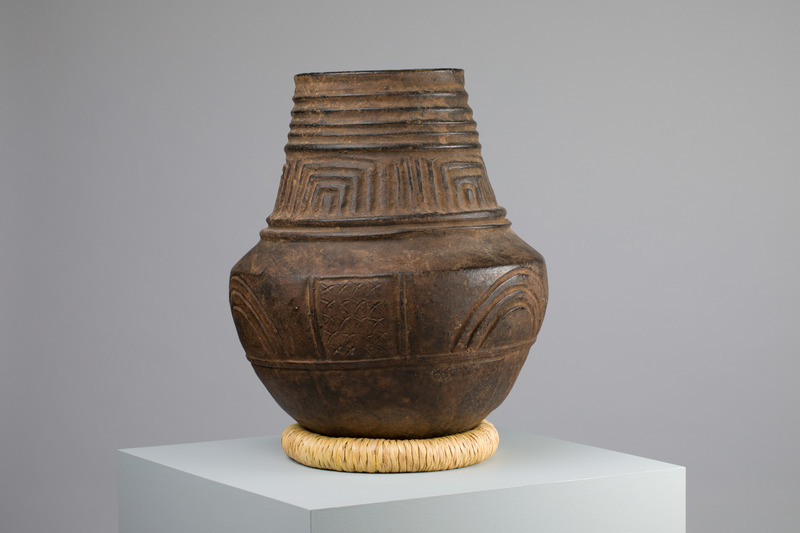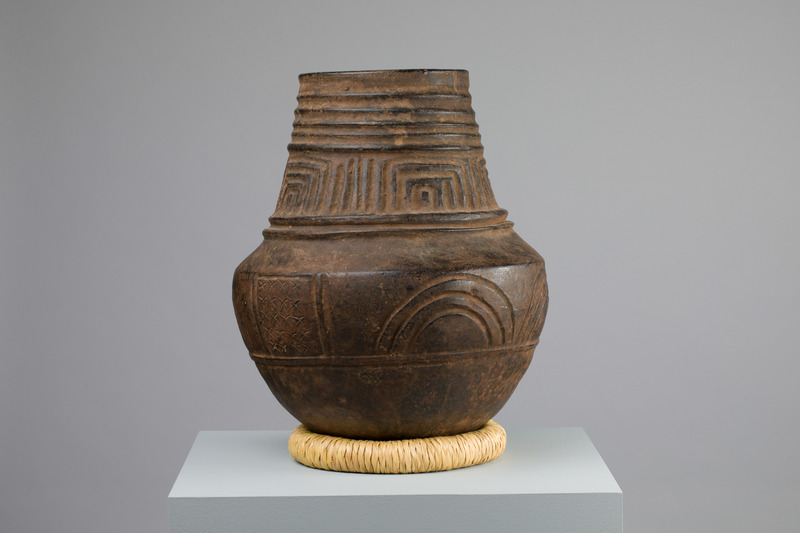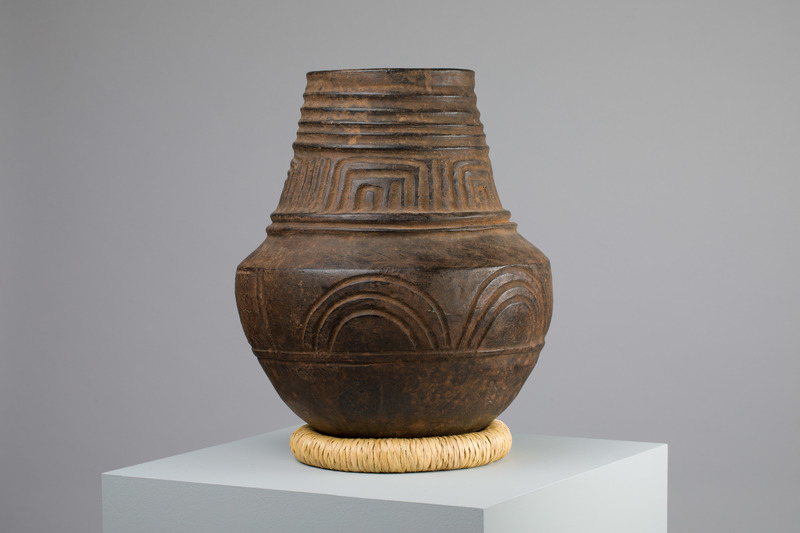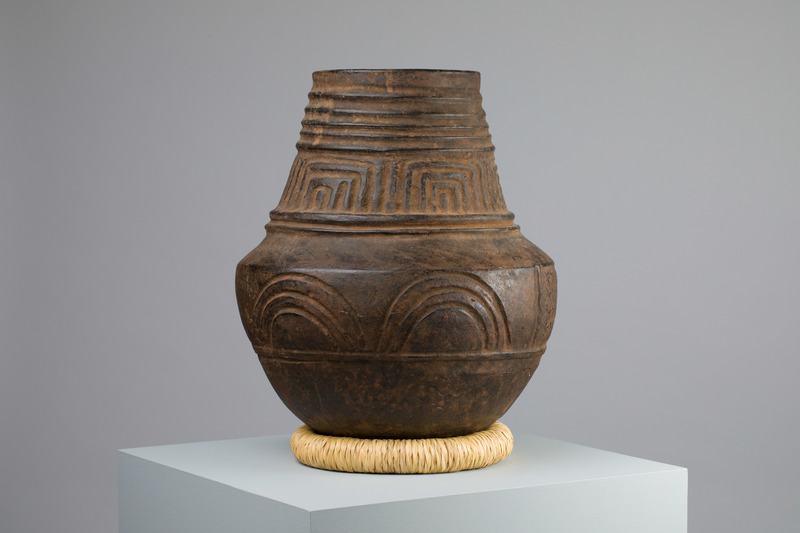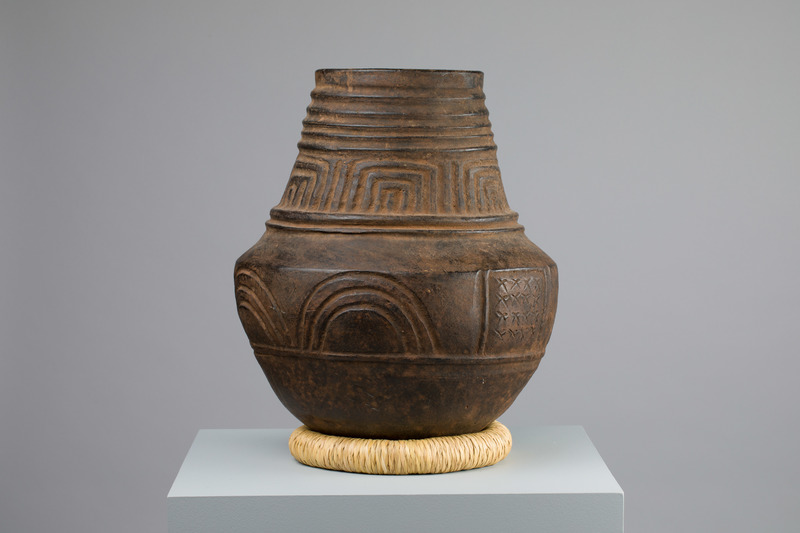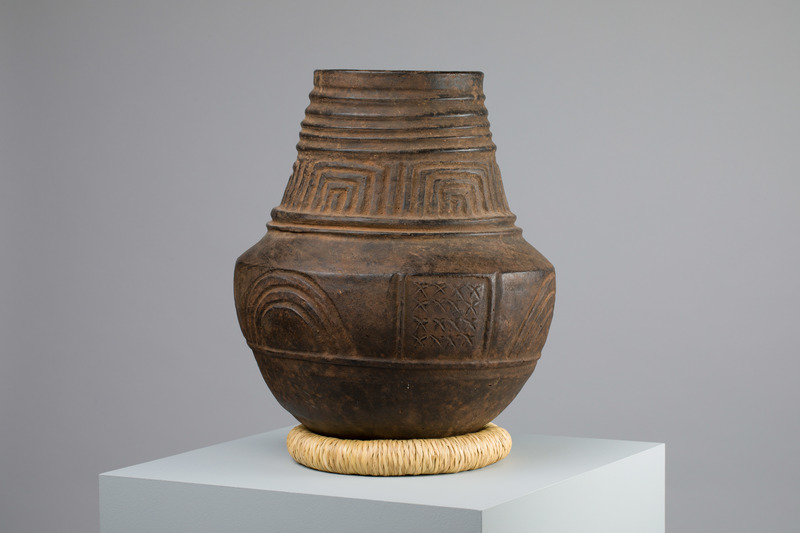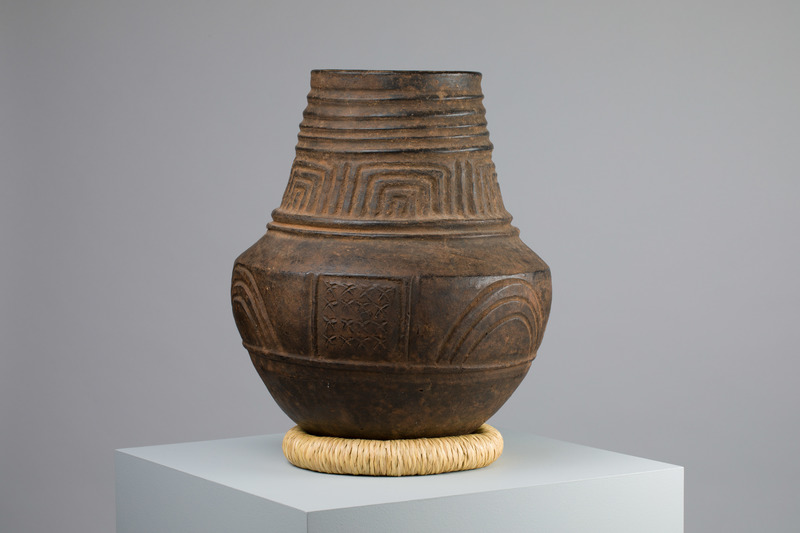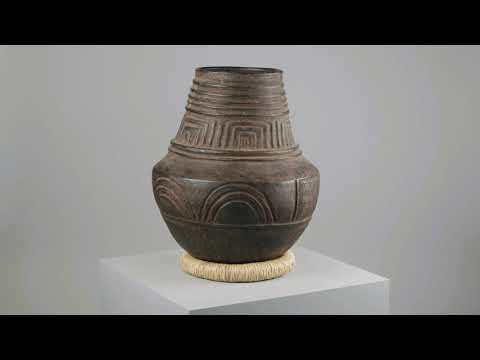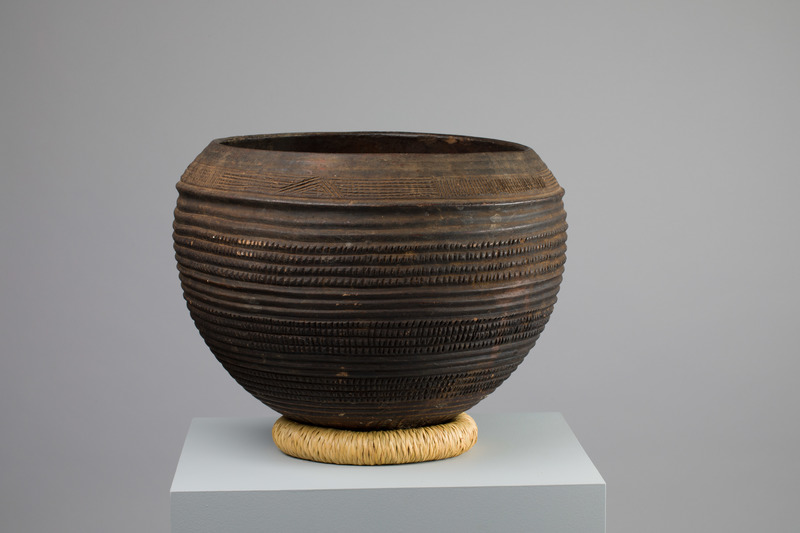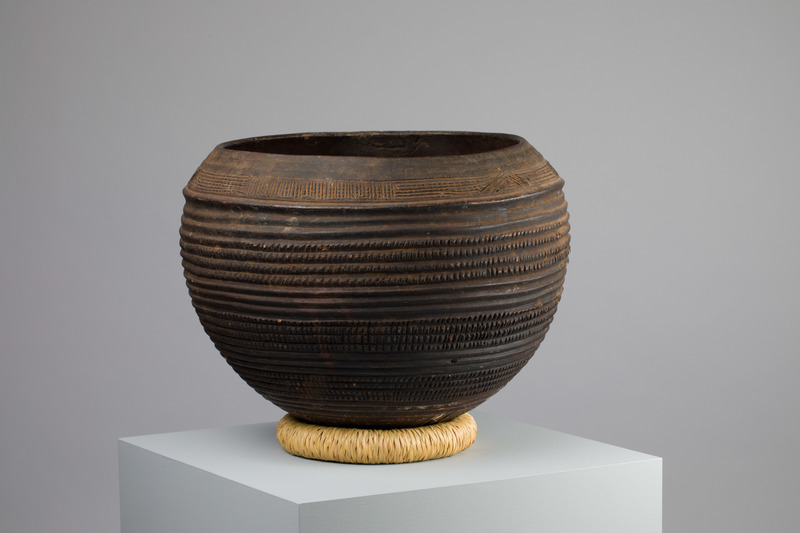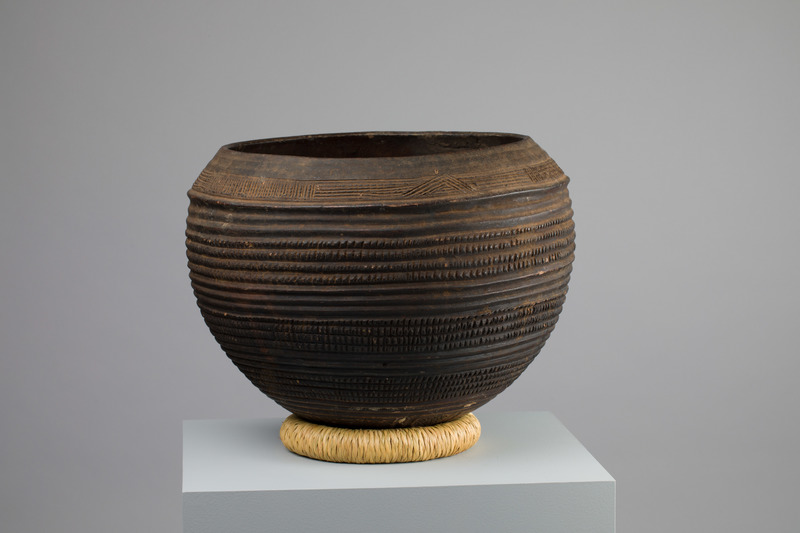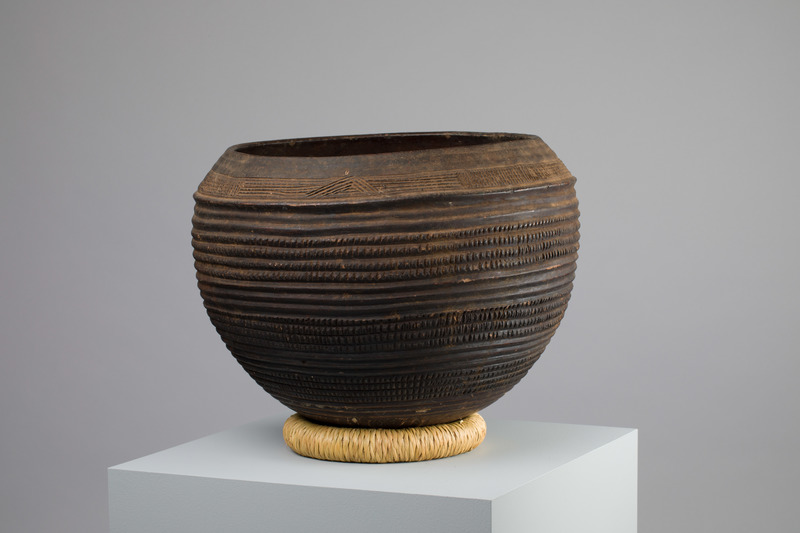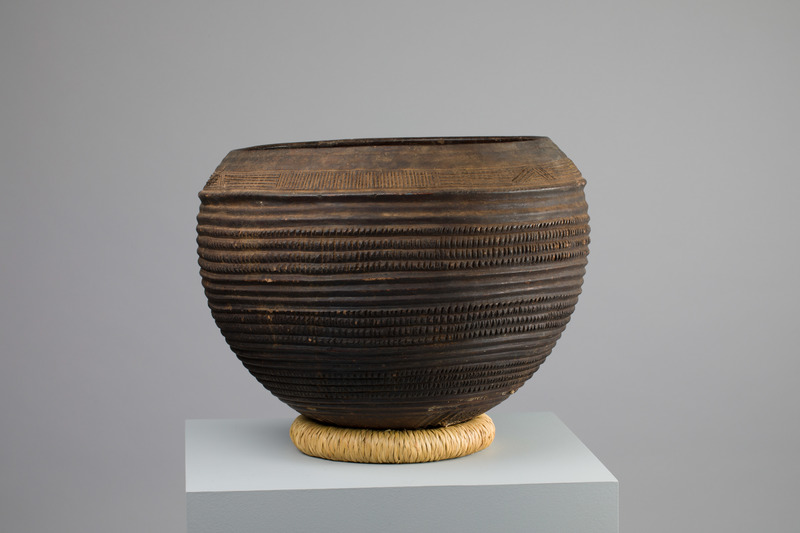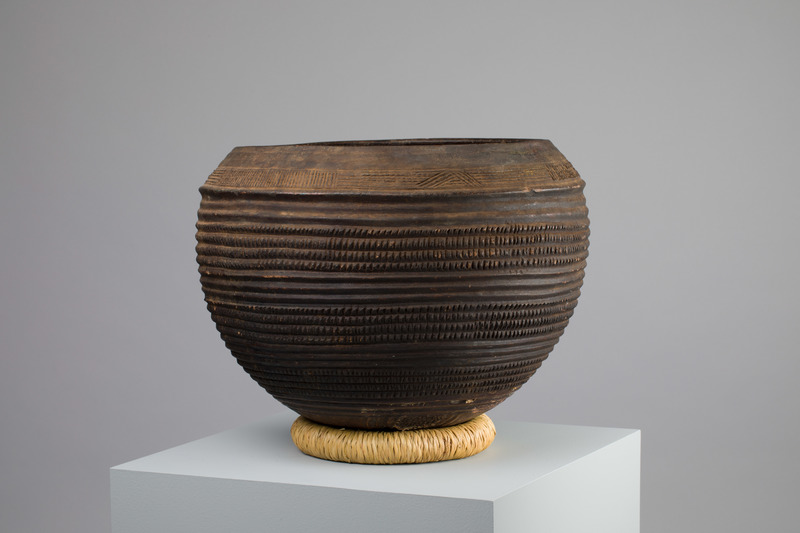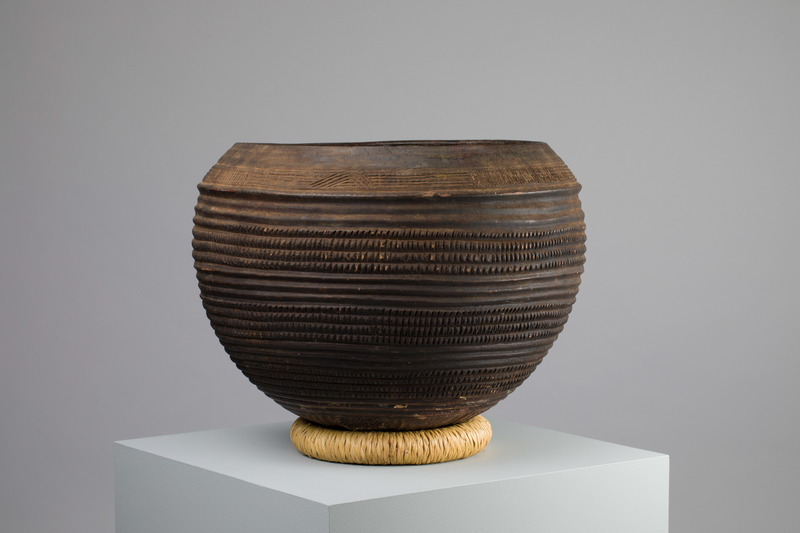Catalogue 32
Storage Pot
Grasslands people, Cameroon (Bamum or Bamileke)
20th century
Terracotta; 11 1/8 x 14 x 14 3/4 inches (28.3 x 35.6 x 34.5 cm)
Palmer Museum of Art
Gift of Allen and Barbara Davis in memory of Margaret F. Plass
2016.195
Pot, mulondo
Songye people, Democratic Republic of Congo
20th century
Terracotta; 14 1/4 x 11 5/8 x 11 5/8 inches (36.2 x 29.5 x 29.5 cm)
Palmer Museum of Art
Gift of Allen and Barbara Davis in memory of Margaret F. Plass
2016.189
Pottery making is the domain of women throughout most of Africa (with a few exceptions), and this is certainly true for the Songye and Grasslands areas (Barley 1994). Throughout the Songye area of the Democratic Republic of the Congo, women start by pressing clay into a mold (often an old broken pot) to make the base, and then add coils of clay to build up the sides, before smoothing the inner and outer surfaces. The Songye make more than two hundred different types of pots, but this tall-necked storage container exhibits a very recognizable style. The deeply grooved lines emphasizing the shoulder of the pot with a series of arches, with the bulk of the horizontal and vertical decorative details being placed on the neck, is typical of this genre (Berzock 2005, 616–62).
In the Grasslands area of Cameroon, simpler pottery forms for cooking and use as containers could be made by most women. But there were also specialist centers of production, where women, usually beyond child-rearing age, specialized in making larger pots such as this example. They distributed their pots to many of the different kingdoms of the Grasslands. Such pots are usually meant to be used for holding palm wine, for use at gatherings of men’s societies, and at royal courts (Geary 2005, 97–98).
African pottery is fired in the open with fuel (wood, straw, or dung) stacked on top of the dried pots, and a firing is often completed in one or two hours. Such low-temperature firing is ideal for African circumstances. The slightly porous terracotta sweats a little and keeps liquids cool. The pots can also withstand the thermal shock of cooking over an open fire.
WJD
References
Barley, Nigel. 1994. Smashing Pots: Feats of Clay from Africa. London: Trustees of the British Museum.
Berzock, Kathleen Bickford. 2005. For Hearth and Altar: African Ceramics from the Keith Achepohl Collection. Chicago: The Art Institute of Chicago.
Geary, Christraud. 2005. “Palm Wine Pot.” In Resonance from the Past: African Sculpture from the New Orleans Museum of Art, edited by Frank Herreman, 97–98. New York: Museum for African Art.

